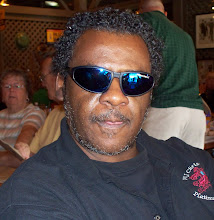Well, I know by now you have gotten a feel for moving the pieces. And after playing "Take the King," you are now ready to continue the learning process. In chess, you cannot really take the king. Thus far, I have allowed this to teach you the game quickly. Now in order to progress, you must stop taking the king. For very young students this will be difficult. This is what I want you to do.
When you get in a position to take the king, I want you to say "check." What is check? Check is said when you any of the pieces are in a position to take the king. For example, let's say most of the pieces have been removed from the board. And all you have are the king and a castle(Rook). Your opponent has only a king on the board. You move your rook to a position to take his king. At this time, you must say "check", giving your opponent notice that you are eying his/her king. The lone king now in check must get out of check. If he cannot, the game is over and it is checkmate.
There three ways to get out of check.
#1. Take the piece that has put you in check if you can. That is the number one way I teach beginners to get out of check. Take the piece that has attacked your mighty king. This is a game of war, and as a warrior, you should do whatever you can to prevent your enemy from getting close to your king. Your opponent is a threat to your king and your kingdom. In real life, as a warrior, you'd defend the kingdom and take your opponent out if you could. The same thing applies in chess. You have to defend the king or you lose most of the time.
#2. Block the threat. In chess this is called interposing. What is interposing? Interposing is blocking the attack of the enemy piece. Let's say you have a castle and a king and your opponent has a king and a bishop. You move your castle down the board and call check five squares away from the king. Your opponent sees that he can put his bishop right next to his king and block the check. This is interposing. It is the number two way of bringing a halt to a check. All of the pieces on the chess board can check and interpose. Yes, even the one point pawns can do both of these powerful movements on the chess board.
#3 Run!!! This reminds me of my father Charlie Henry Smith who once told me in the hard streets of Brooklyn, New York growing up that the next time I came home with my bike stolen, I at least needed to look like I had been robbed. What he meant by that was that I should put up some resistance and not just come home crying. To some, this might seem cold, but in the big city, my father who was from Southern Pines, North Carolina knew how to help his son survive. I had to be tough. And so do you on the chess board and in this world. The last thing you do is run when attacked if you cannot take the checking piece. And if you cannot interpose, you run. Your king must survive, so the last thing you would do is flee as a last resort. These are the three ways to get out of check, and if your king cannot do so, then he can not move and this is called checkmate.
So, I would like you to try to play with the new word "check". You must call check when you attack the king to alert your opponent that he or she is eying your king. He must get out of check before he can do anything else. And If he cannot get out of check, the game is over and you won't hear your opponent say check, you'll them say checkmate as they claim the win.
That's the game in a nutshell. This method of teaching beginners has been proven by me and hundreds of my students. I invented this method of teaching to allow my students to enjoy the game while they learned. You or your students will enjoy this way of learning as well. I'll be back regularly from here on out. Chess On!!
Tuesday, March 2, 2010
Subscribe to:
Posts (Atom)

